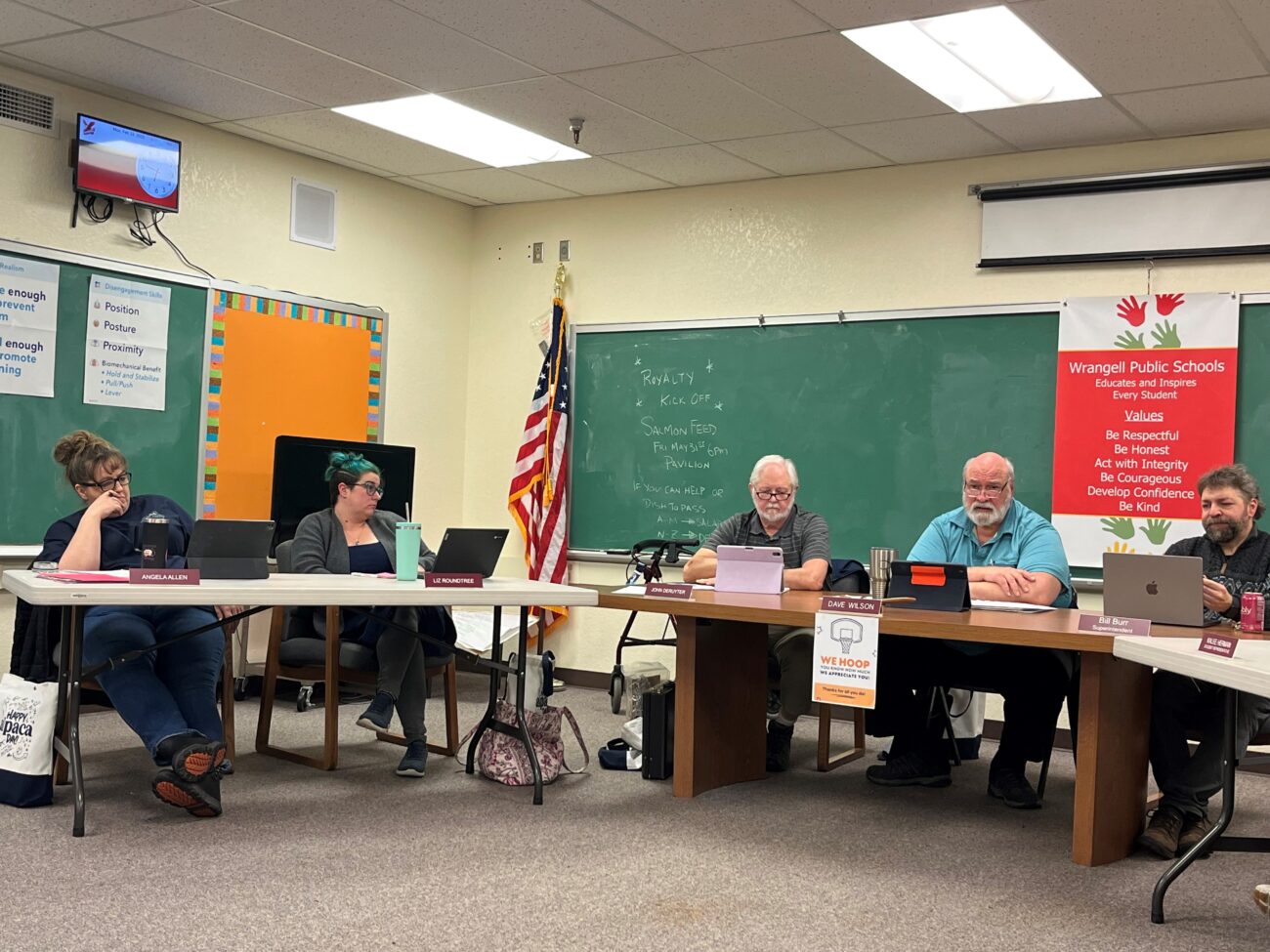
Wrangell Public School District is peeking down a financial deficit hole for Fiscal Year 26. Ultimately, the school district needs $3.5 million, but school officials said things don’t look too promising. They’re figuring out how to financially make ends meet, but they’re not sure if they’ll even be close to meeting that amount.
Kristy Andrew, the district’s contracted business manager through K12 Business Services, said the state is projected to provide the school district with $2.6 million. She did not include a base student allocation, or per-student funding, since the state hasn’t committed to one yet.
“We do realize that we received one-time state funding for the last several years, but at this point, there is no guarantee,” she said.
As the draft currently shows, the school district is looking at a deficit of at least roughly $271,000, without knowing what funding could be coming from the state or borough.
Even with a reserve, the district will have a deficit
She said the total revenue for FY 2026 is $5,053,462 (the state is projected to give just over $2.6 million) and the total expenditures would be more, at $6,113,392. Additionally, they’re anticipating transferring funds in the food service, which would increase the deficit. And the $818,315 reserve in the beginning of the year will barely make a dent.
She said contributions from the municipality wouldn’t prevent a deficit next year.
Andrew said she believes they won’t contribute the maximum allowable contribution of $1.7 million because of previous conversations with the municipality. She thinks it’ll be less, up to $1.4 million instead.
‘(SRS) has been the funds that have been primarily used to support the school.’
Andrew said that Wrangell has fewer special education intensive students for next year. This decrease would lower the amount of state funds given to the school.
They budgeted for 260 students, but that school size adjustment increased when considering four special education intensive students. After some calculations, the average daily membership is $595.52.
The district’s draft budget shows that 73% of its expenditures go towards staff wages and benefits.
Andrew said the district is anticipating giving two teachers a raise equaling roughly $11,000. Additionally, the draft shows the superintendent and two principals receiving a similar raise with a placeholder at $12,000 total. The district also expects its health insurance plan to increase its premiums by about 10%.
Andrew said the district has tried reducing expenditures, with a $30,000 decrease in technology services.
There’s also the Secure Rural Schools, or SRS funding, which is paid to communities next to federal lands. Superintendent Bill Burr said the House didn’t pass that funding earlier this year, however, Congress could reestablish it.
“It’s affecting this year as well,” he said. “And that has been the funds that have been been primarily used to support the school.”
For the last three years, the City and Borough of Wrangell used SRS funds to meet close to the maximum contribution for the school district. Last year, this was in exchange for the state’s one-time BSA funding. Burr said how much deficit the district will have will depend on the municipality’s contribution. But as it looks now, there will definitely be a deficit, somewhere between $271,000 to $680,000.
Savings depends on legislative funding
Burr said if there’s no funding from the legislative level, there will be no savings to draw from.
“We’re always facing an uphill battle on funding cuts,” he said. “We’ve done a good job of being able to be where we’re at, which is not an ideal spot, but it’s much better than if we had spent things differently.”
He said education costs have risen but funding hasn’t.
‘…if the roof caved in tomorrow we’ve got money to fund it.’
Additionally, the district has a $1.2 million reserve for capital improvements and several attendees at the work session asked if that could help fix the deficit.
Board Chair Dave Wilson said the board hasn’t discussed those funds much because they’re for possible emergency maintenance issues. The city and borough own the school buildings but Wilson said there’s been problems with the municipality not fixing issues promptly in the past.
“One of the concerns we have, for the reason we have that money and we have it set aside, is that if the roof caved in tomorrow we’ve got money to fund it,” he said. “We’ve had things go wrong before.”
The board said they’re looking at everything in the budget, from salaries to small changes in order to do what’s good for the students. One thing they know for sure is they don’t want to cut positions.
Consolidating schools is unlikely
Recently, Ketchikan and Juneau Public Schools have consolidated their schools to save money, but Wilson says that would not be good for the students in Wrangell.
“It would not help student learning. It would not help their well being,” Wilson said. “It has been discussed, but I can only speak for myself. I myself don’t think it is a good thing for our students.”
Amber Armstrong voiced her concerns as a community member. She said she agrees that the schools should not merge together.
“You got to pick, what are you going to lose? You lose band? You’re going to lose all sport activities for the entire school district? I mean, these are really hard decisions,” she said. “I know you guys are in a tough position.”
She asked the board how community members can help.
Wilson said residents should send letters to the city and borough, Wrangell’s state representatives and federal senators. He said to emphasize the SRS funding.
The board welcomes public ideas and concerns regarding the deficit. Discussions on the draft budget will continue at each meeting going forward until the board submits the final draft on May 1. Next up is a joint session between the school board and the City and Borough of Wrangell on March 24.












